Estimated reading time: 4 minutes
By early to mid-spring, the cherries have definitely started to grow!
Even though they’re not the most exciting-looking flowers, they cause great excitement when they appear. For us, it’s the promise of delicious flavour-bombs within a few weeks.
But they are also a potent symbol of spring and new beginnings. It’s probably not surprising that cherry blossoms inspire festivals and celebrations around the world, most notably in Japan.
Related Articles
How much fruit will your tree produce?
Working out how much fruit a mature fruit tree can grow will help you plan how many trees you need in your garden to meet your family’s needs.
How to prune your apple tree
Pruning apple trees takes a little more specialist knowledge than other fruit types, but your trees will reward you with ample crops.
Taming monster fruit trees with renovation pruning
Learn how to use a technique called renovation pruning to tame large, unpruned, and out-of-control monster fruit trees.
Cherries have a special place in the fruit season
Cherries are actually one of the last deciduous tree fruits to flower, coming in at around the same time as the apples. They’re way after the apricots, peaches, and plums.
That’s a good thing because it can help to miss the frosts.
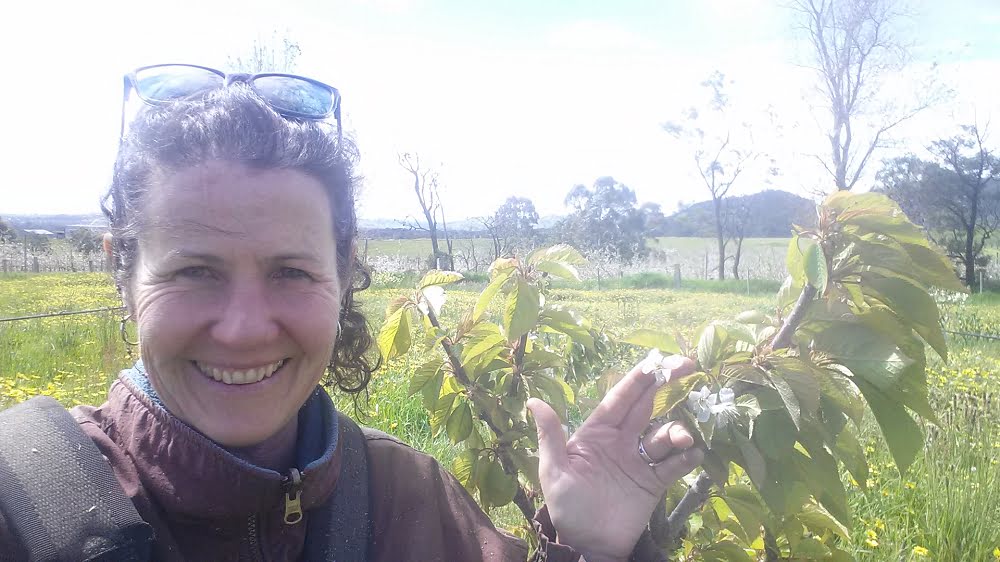
Despite being one of the last fruits to flower, they’re the first fruit we harvest.
Cherries are a kind of miracle fruit, with a super-short growing season. This makes them a “must-have” garden fruit tree, particularly if you live in a climate with a short growing season.
Just a few short weeks after they’ve started flowering, you’ll notice the flowers fade away. In their place, you’ll find these little green lumps on stems – the baby cherries.
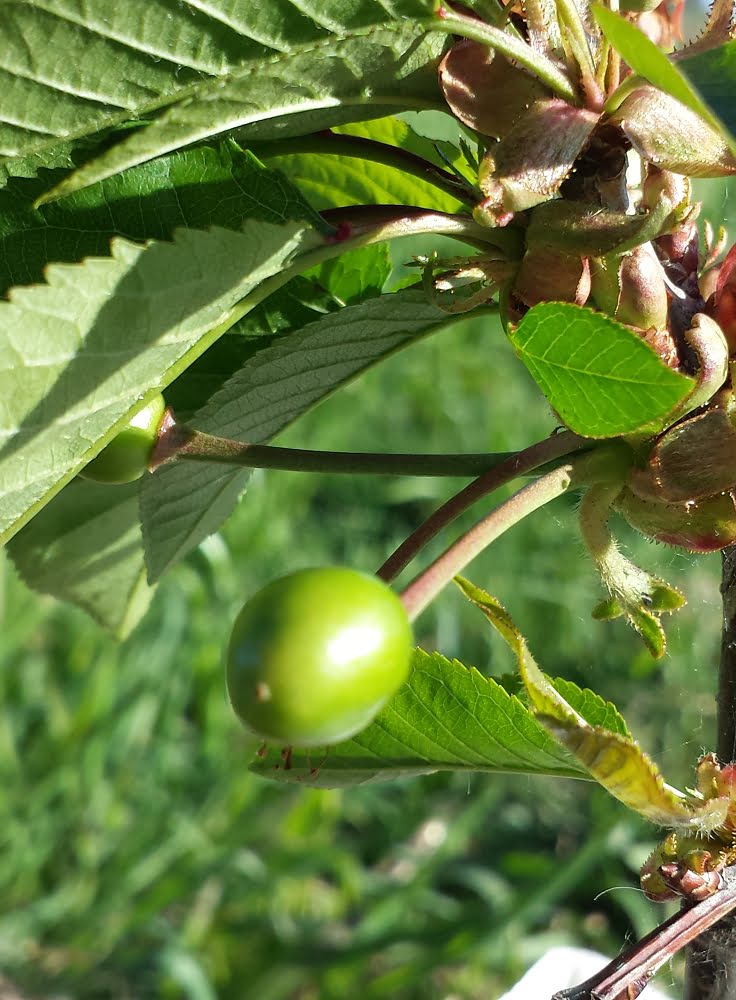
Nothing much seems to happen for a while….until suddenly one day you’ll notice a flash of pink in the trees. An exciting day for a keen fruit grower!
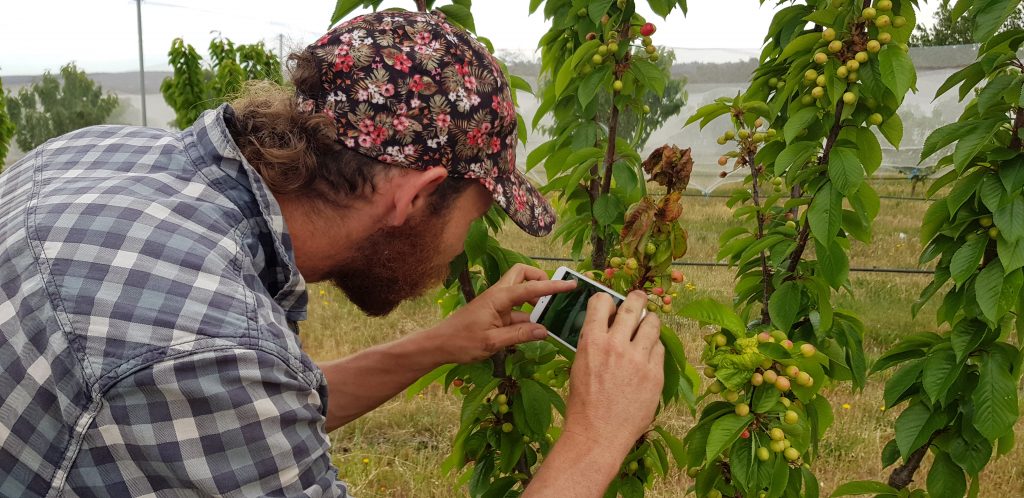
What’s the downside of growing cherries?
Cherry growing sounds pretty simple, doesn’t it?
Unfortunately, there’s a long list of things that can go wrong with cherries, both the trees and fruit:
- The biggest challenge is protecting the precious fruit from birds.
- Then there are all the things that want to eat your fruit (other than us), like earwigs and garden weevils;
- They’re very vulnerable to weather events like rain and hail, as the fruit splits easily;
- The trees hate having “wet feet”, so you’ll need to find a spot with good drainage;
- They also need enough water, which in most cases means an irrigation system;
- The fruit can be vulnerable to diseases like brown rot;
- The trees are frequently attacked by aphids;
- Cherry trees can get several fungal and bacterial diseases.
It’s a long list of potential disasters (and we’ve experienced most of them), but don’t worry. Once you know what to expect, many of these problems are avoidable.
Planning for a good cherry crop
- Make sure you have the right polliniser tree (it’s easy to graft a polliniser onto your existing tree);
- In most cases, you’ll probably have to net the trees;
- Barriers around the trunk prevent crawling insects from eating the fruit;
- Check the soil around the trees to make sure it drains well in excessive rain;
- Install an irrigation system;
- Promote biodiversity around your trees with varied plantings.
If you have a cherry tree, you’ll be pleased to hear that most of the above-mentioned problems have fairly simple solutions.
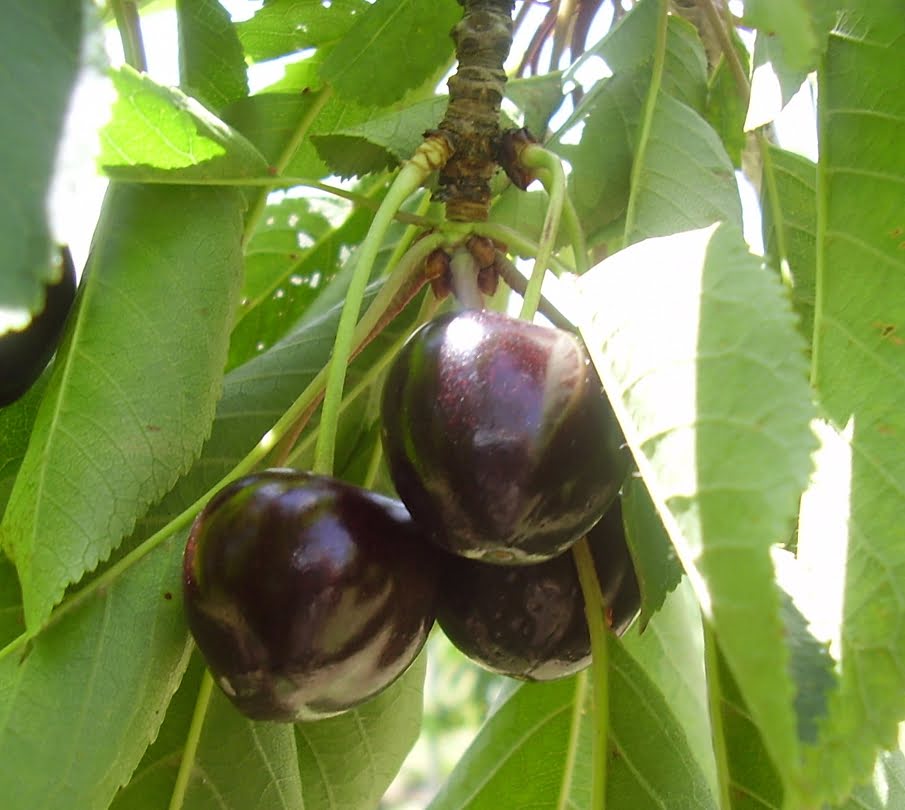
Are cherry trees worth the bother?
It sounds like a lot of work, doesn’t it? Kind of makes you wonder whether it’s worth all the hard work and bother.
Take it from us, it is! Cherries are delicious!
They’re also fantastically good for you, being very high in nutrients and vitamins, and will even reputedly cure gout (and a number of other ailments).
You should get good crops most years, and they are usually easy to pollinate (as long as you have the right companion tree). Once the trees are established properly, you’ll find them easy to prune and maintain a good shape.
They’re also synonymous with summer holidays and bring back fond memories of long warm days and visits to “pick-your-own” farms (we’ve offered this on our farm for many years).
So despite their finicky nature, it’s totally worth your while having a cherry tree in the garden, as they’re one of the most rewarding fruits to grow.
Related Articles
How much fruit will your tree produce?
Working out how much fruit a mature fruit tree can grow will help you plan how many trees you need in your garden to meet your family’s needs.
How to prune your apple tree
Pruning apple trees takes a little more specialist knowledge than other fruit types, but your trees will reward you with ample crops.
Taming monster fruit trees with renovation pruning
Learn how to use a technique called renovation pruning to tame large, unpruned, and out-of-control monster fruit trees.

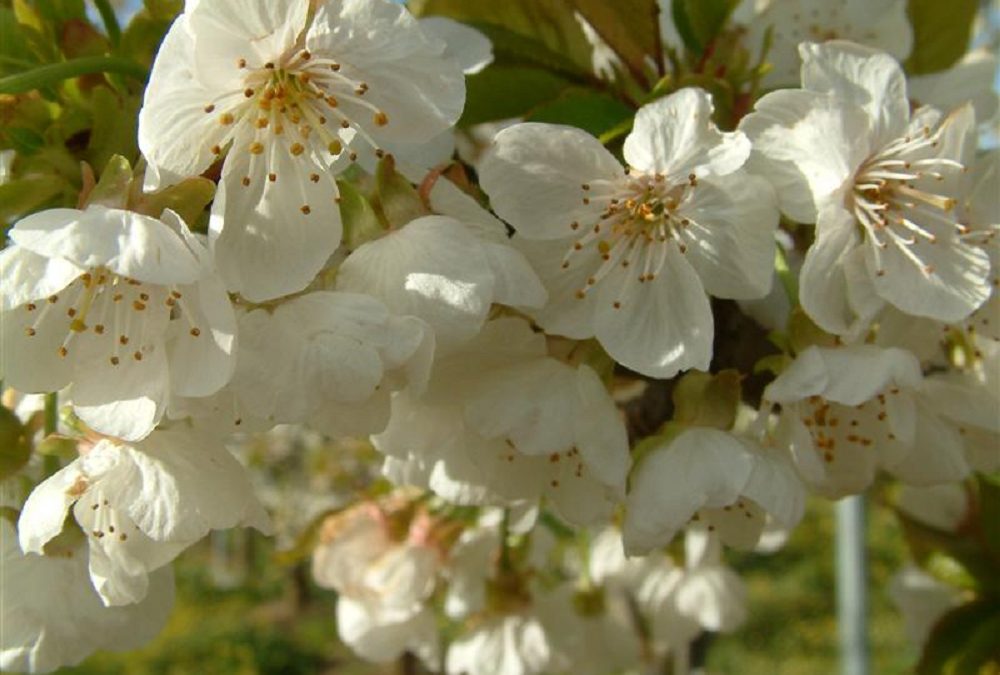
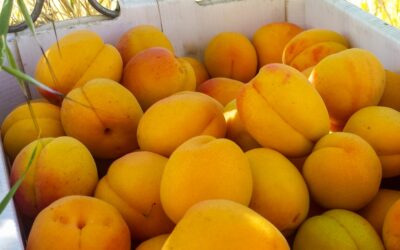
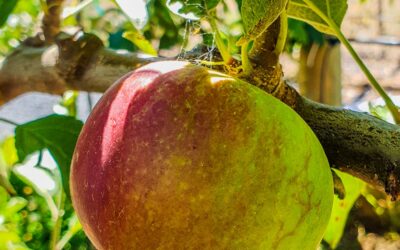
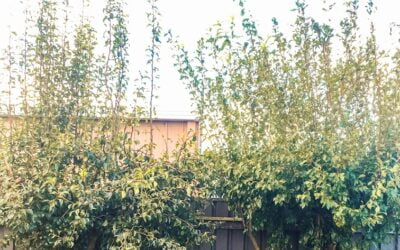


Cherries are a must for the Christmas table. I have 4 varieties, Stella, lapping, Simone and sunburst. A feral seedling popped from the Stella a couple of years ago and it looked so healthy I decided to experiment with grafting. Although the tree flowered they were tiny bitter skin and pip fruits. The first 5 grafts took and we enjoyed about half a kilo of fruit. This year I have completely covered the tree with the four varieties and about 80% of the grafts have taken. Last year I also potted up and grafted the other seedlings that emerged and have given them to family, friends and the street residents.
Wow sounds amazing (and delicious). Great work experimenting with grafting too. Enjoy your cherry bounty! Meg – Grow Great Fruit team.
Hi can you tell me please which are the best companion trees for cherries?
We definitely suggest some other cherries to start with – plenty of cherry varieties are self-fertile. Plus, many have a short fruiting window, so mixing you’re varieties to prolong your cherry harvest. If you’re already well past that, then there are plenty of options & we love an orchard with wide variety, plus a diverse understory of shrubs and friendly plants beneath. Other stonefruit like plums, or apples and pears might thrive in similar conditions to cherries. Good luck, Meg – Grow Great Fruit team.